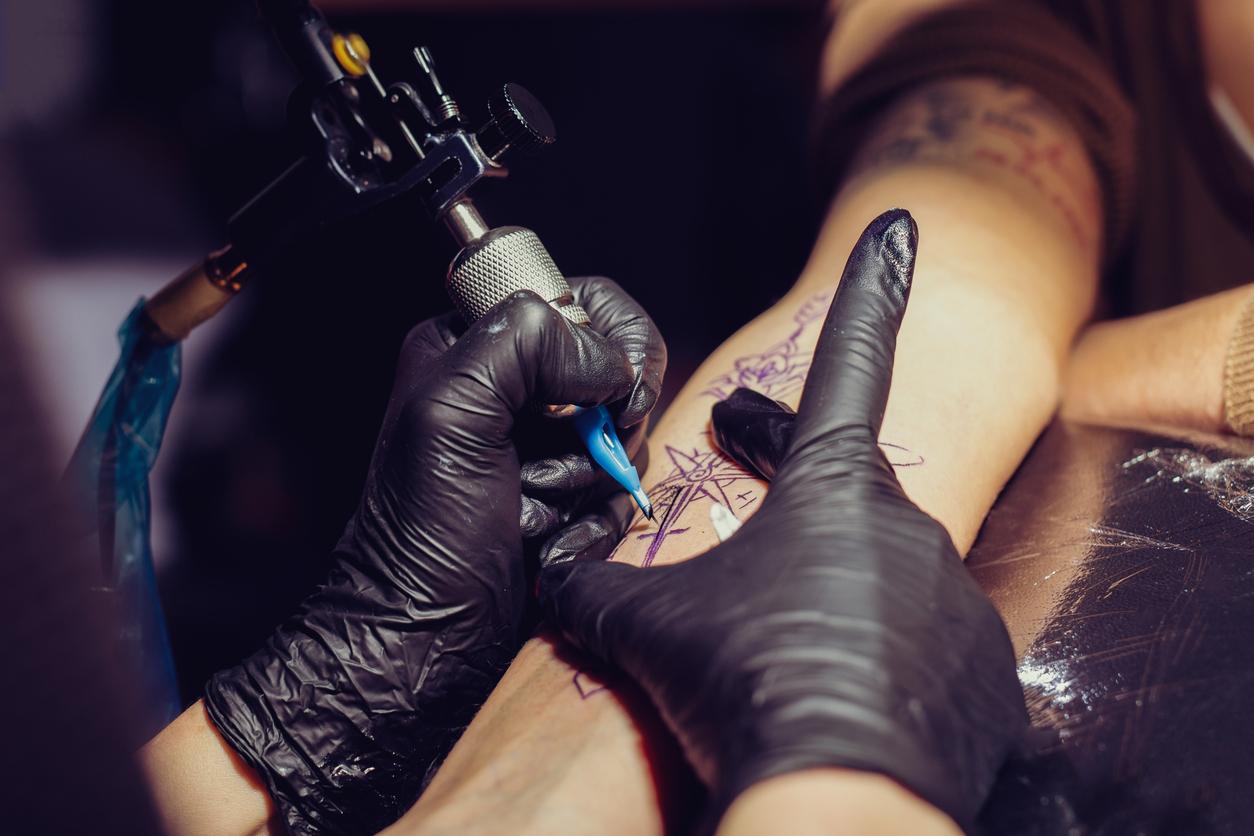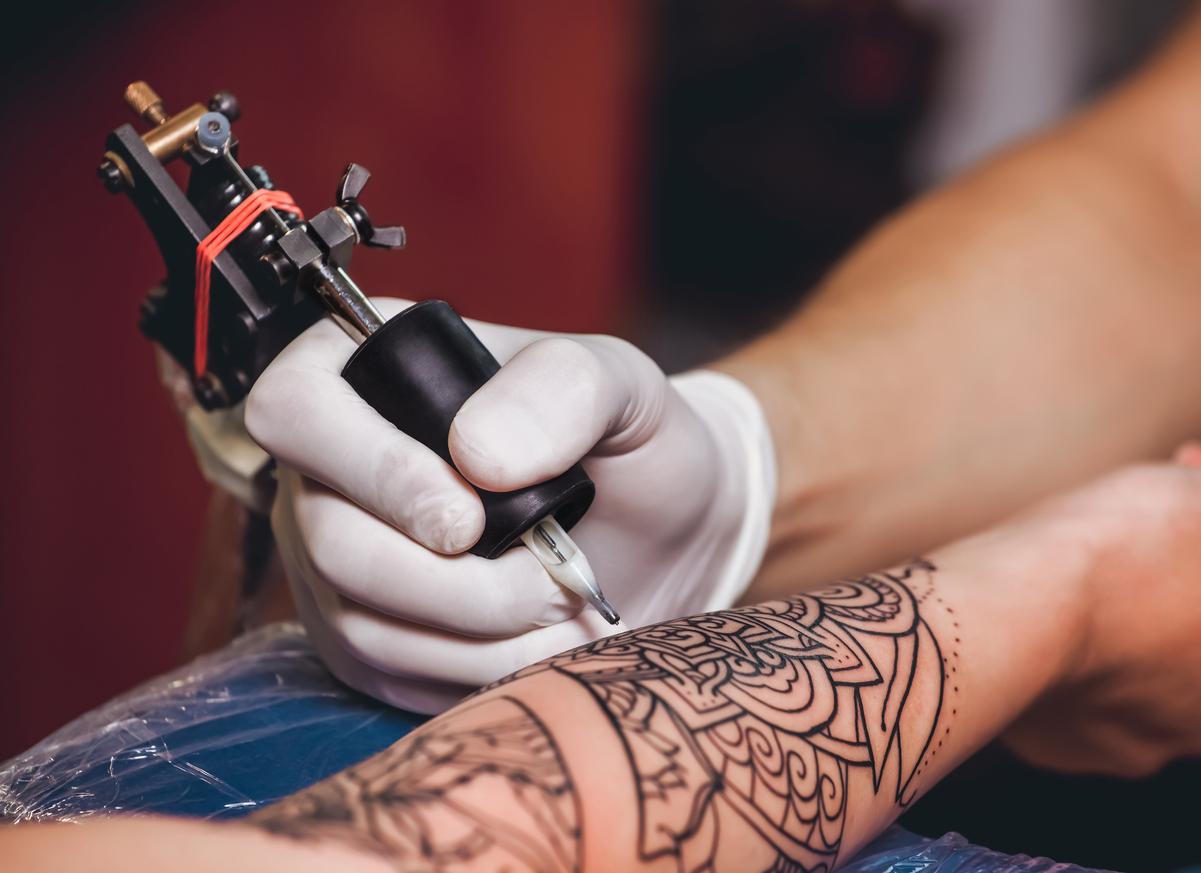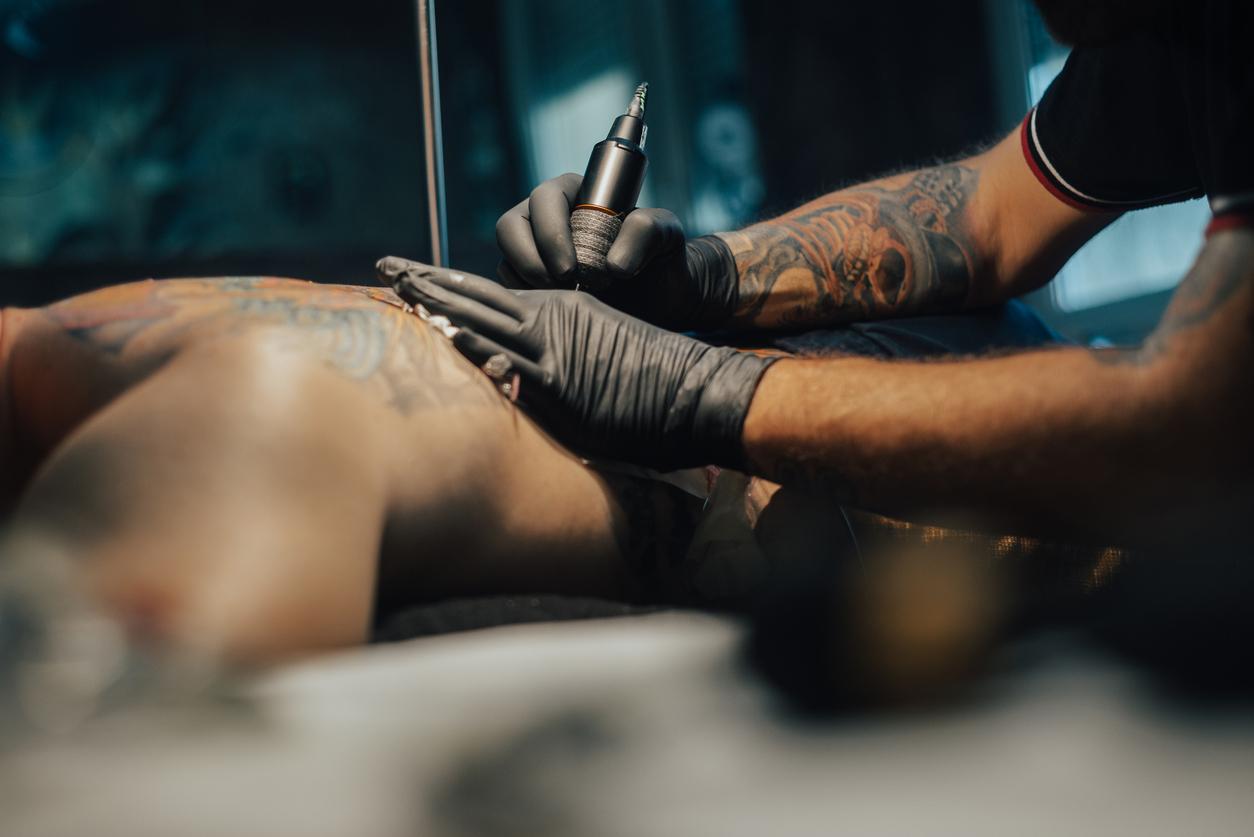Gone are the days when tattoos only adorned the biceps of misfits. This practice has since shed its bad reputation. The proof by the figures: according to an Ifop poll for “La Croix”, 18% of French people (and 29% of those under 35) were tattooed in 2018, against 10% in 2010. Even if it means spending, sometimes, a little too much quickly to the act. And when we are not – or more – happy with the result? Some choose to live with … some don’t. A priori indelible, tattoos can actually be erased, even if this process is not a long quiet river.
Laser tattoo removal, instructions for use
“” The laser is a light that will ‘break’ ink drops which have been deposited in the skin by the tattoo artist’s needles,explains Dre Marie Jourdan, dermatologist. The energy of the laser is absorbed by the ink, over a very short time, and this will make it “explode”: it will be fragmented, like a rock which would have been pulverized with the help of a mass. The body and its macrophage cells will then remove this ink dust. ” The session is quick, from 5 to 30 minutes. But it will have to be repeated.
A tattoo gradually fades. It is necessary count, on average, from three to ten sessions, depending on its age, color, size, and even the tattoo artist’s experience. A professionally designed pattern that is richer in pigments is also more difficult to remove.
Laser tattoo removal: what are the advantages?
The old generation of lasers, used for twenty years, is called nanosecond, the new picosecond. The difference ? The pulse duration is much shorter with pico (of the order of a thousandth of a billionth of a second) than with nano (of the order of a billionth of a second). What does that change?
“The picosecond lasers ‘explode’ the ink, but so quickly that there is even less collateral damage.”The skin recovers faster after treatment, there is generally less scabbing than with nanosecond lasers, although blisters are common.
The minimum time between two sessions is therefore reduced: one month for pico, against two months for nano. An incompressible delay so as not to be exposed to an “overheating” of the skin, and therefore marks.
Pico are also formidably effective on very resistant colors, like blues and greens. The price of success, they are also more expensive.
Tattoo removal: what are the risks?
The laser is today the reference technique for erasing tattoos. However, it is not foolproof and the result cannot be guaranteed for sure. While red and black fade quickly, some colors are very difficult to get rid of, such as yellow or orange. In over 90% of cases, the tattoo eventually disappears from the skin’s surface, as if it never existed. But it can also happen that a “shadow” takes the place of the drawing. The treatment can also result in skin burns, even scars, if the operator is not experienced, even if this remains very rare today.
Tattoo removal: the surgery option
“It is interesting for very small tattoos”,advocates Dr. Jourdan. Under local anesthesia, the part is removed like a mole. The surgeon removes the piece of skin decorated with the tattoo, before suturing the wound. A trivial operation.
But to be possible, the design must be located on an area where the skin is supple and fleshy, such as the stomach or buttocks. On the wrist or the neckline, the laser will often be more appropriate. While surgery has the advantage of being extremely quick – only one session is necessary – it leaves a small scar.
Tattoo removal: how much does it cost?
“It is not nothing to get tattooed” insists the dermatologist. The process already requires being extremely patient. “Between 6 to 12 months on average, sometimes up to 24 months if you are unlucky.” More, “It hurts more than the tattoo itself. The pain is that of a burn. That is why we recommend applying a thick layer of numbing cream 1 hour 30 minutes before the session.” And if, after these warnings, some (s) still want to part with their skin works of art, you should also know that it is expensive.
“On average, it takes from 250 to 500 € per session.” Multiplied by 5, 7, 10 sessions, this can deter more than one. Especially since this medical act having a purely aesthetic objective, it is not at all reimbursed by Health Insurance.
Read also :
- Smart tattoos that can save our lives
- Tattoos: inks move around the body

















